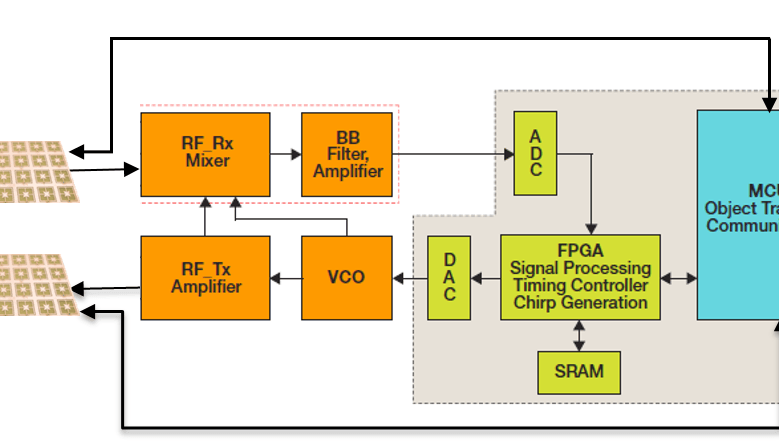Auto radar back to analog
October 17, 2017
on
on

As some motorist have discovered the hard way, today’s automotive radar can’t see objects that a camera or lidar can see. Also, many radars operate at processing speeds that simply aren’t fast enough for the highway / motorway /racetrack :-). Radar’s only saving grace is that it operates in all-weather conditions.
Metawave Corp., spun out of PARC, a Xerox company based in Palo Alto, Calif., thinks it can alter what the automotive industry perceives as the “limitations” of conventional radars. The solution comes from metamaterials, small software-controlled engineered structures, laid out on a printed circuit board and able to steer electromagnetic beams in ways that were previously only possible with the much larger, powerful and more expensive systems.
Metawave says the trouble with today’s automotive sensors is not owing to radar chips like the ones from NXP, Infineon or Texas Instruments . In fact, Metawave’s full radar package is radar chip agnostic.
Stressing that “we still exist in the analog world, and so does the car,” Metawave intends “to build an affordable, high performing analog radar platform without the complexity and cost that we would see in military-grade operations.” The flaw in digital beam forming (DBF) is phase delays. Computations require complex and lengthy digital signal processing, resulting in extremely slow reaction speeds of the order of milliseconds for beam steering and poor ‘collective’ radiation patterns as the beam is steered away from the boresight (zero degree angle).
Metawave, founded in January 2017, plans to show off a prototype at the Consumer Electronics Show in January 2018.
Metawave Corp., spun out of PARC, a Xerox company based in Palo Alto, Calif., thinks it can alter what the automotive industry perceives as the “limitations” of conventional radars. The solution comes from metamaterials, small software-controlled engineered structures, laid out on a printed circuit board and able to steer electromagnetic beams in ways that were previously only possible with the much larger, powerful and more expensive systems.
Metawave says the trouble with today’s automotive sensors is not owing to radar chips like the ones from NXP, Infineon or Texas Instruments . In fact, Metawave’s full radar package is radar chip agnostic.
Stressing that “we still exist in the analog world, and so does the car,” Metawave intends “to build an affordable, high performing analog radar platform without the complexity and cost that we would see in military-grade operations.” The flaw in digital beam forming (DBF) is phase delays. Computations require complex and lengthy digital signal processing, resulting in extremely slow reaction speeds of the order of milliseconds for beam steering and poor ‘collective’ radiation patterns as the beam is steered away from the boresight (zero degree angle).
Metawave, founded in January 2017, plans to show off a prototype at the Consumer Electronics Show in January 2018.
Read full article
Hide full article


Discussion (0 comments)